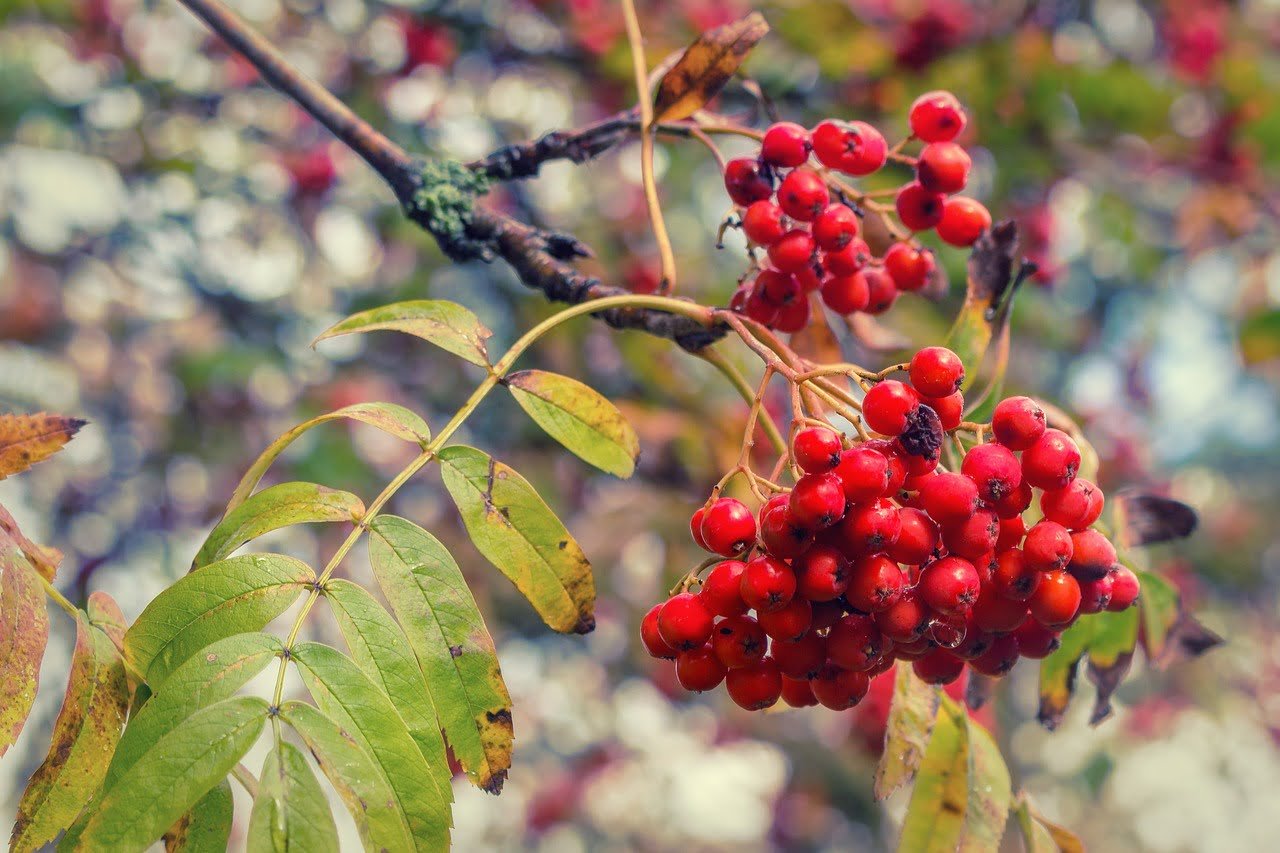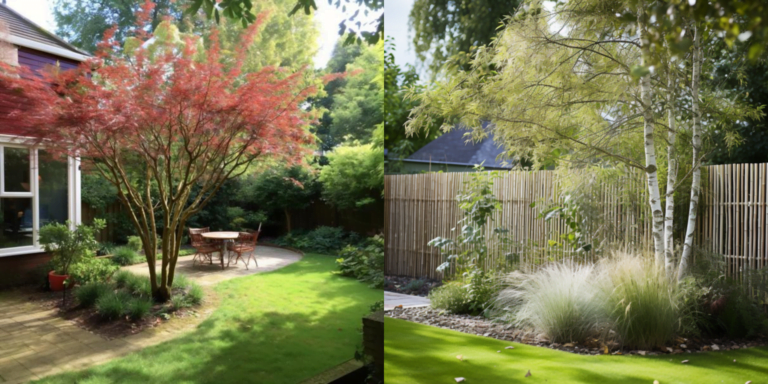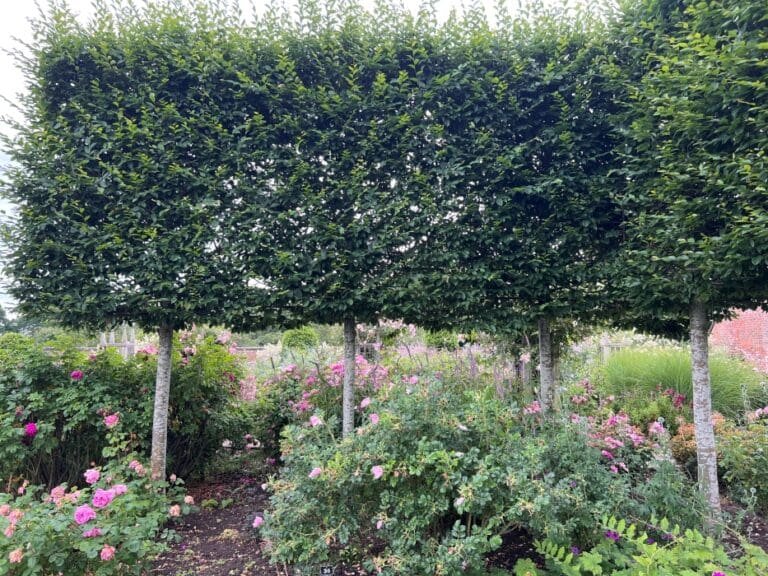When planning a small UK garden, choosing the right trees is crucial. With limited space, you’ll want trees that provide ample benefits without overgrowing their bounds. The correct trees can provide year-round visual interest as well as attract wildlife, produce edible fruits, and enhance the garden’s overall appeal.
This article will discuss the best trees for your small UK garden. We’ll cover the key factors to weigh when selecting trees along with seven excellent varieties that flourish in compact gardens across Britain. Read on for tips to help you pick trees tailored to your unique space.
You might also be interested in: Best Trees for Wildlife in the UK
Choosing Trees for Tiny Gardens
Several considerations come into play when picking trees for petite gardens:
- Mature Height and Spread – Make sure to select tree varieties that cap off at heights your garden can accommodate once fully grown. Also check the ultimate width to ensure the tree won’t brush up against buildings or other plantings as it matures.
- Growth Rate – Faster growing trees tend to have more aggressive root systems, which you want to avoid placing near pathways, driveways and home foundations in a small garden. Slower growing trees are easier to manage long-term.
- Root System – Pay attention to the type and spread of a tree’s roots. Shallow roots that invade lawns and borders can quickly become a nuisance. Deeper roots that run straight down are much better suited for most small gardens.
- Soil Type – Match the tree to your garden’s soil qualities, whether clay, sandy, acidic, etc. Selecting a variety naturally adapted to your soil ensures healthy growth.
- Sunlight Requirements – Consider the sunlight patterns in your garden, choosing varieties that thrive in either full sun or partial shade depending on exposure.
It’s also important to pick trees that suit the existing look and size of your garden. For example, opt for compact ornamental trees in very small gardens rather than towering oak trees destined to look silly in small surroundings.
Be mindful of hazards like power lines and buildings so the tree’s ultimate height and width don’t cause issues. Carefully selected trees can greatly enhance tiny gardens without overstepping their bounds.
7 Fantastic Trees for Small UK Gardens
Here are seven wonderful trees ideally sized for small residential gardens across Britain:
1. Japanese Maple
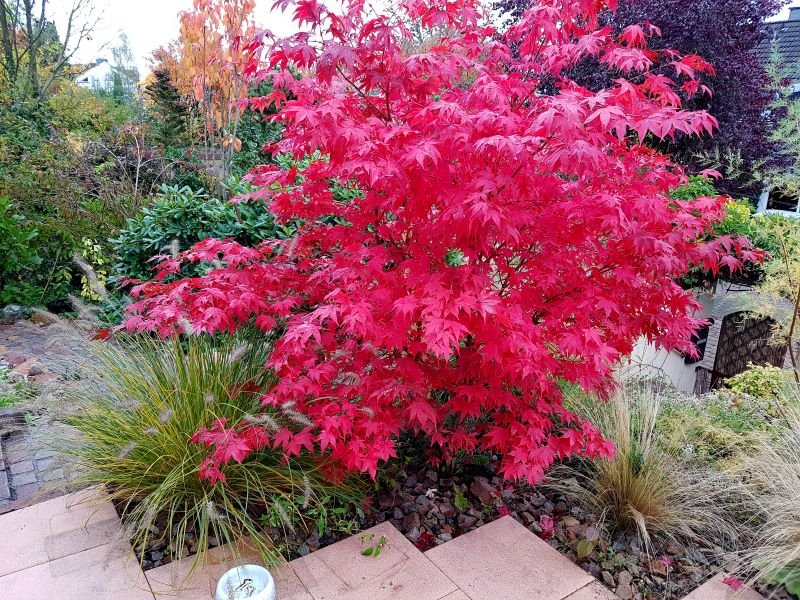
Japanese maples (Acer palmatum) bring graceful beauty to gardens large and small. Given their relatively compact size, vibrant foliage, and diverse cultivars, they’re a top choice for tiny yards. These ornamental trees thrive in partial shade and adapt well to most soil types.
Popular compact cultivars like ‘Seiryu’, ‘Peaches and Cream’, and ‘Shaina’ fit nicely into the smallest gardens, typically topping out at 2-3 meters tall and wide at maturity. Their vivid green, red, or variegated leaves elicit year-round visual excitement.
2. Crabapple
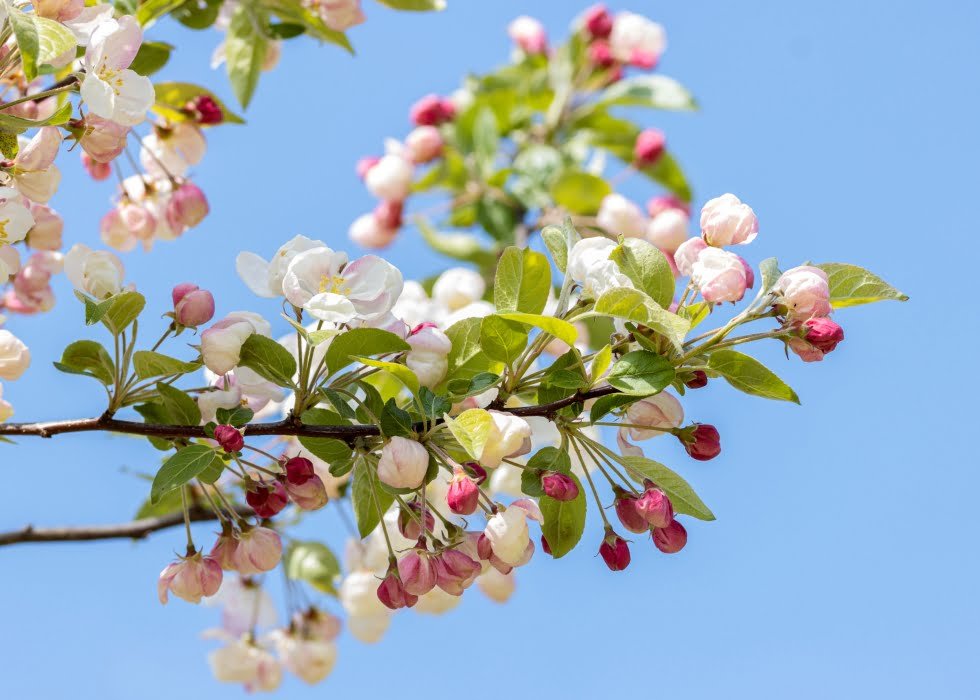
Crabapple trees (Malus) shine in small gardens thanks to abundant spring blossoms, summer greenery, and fall fruits. They come in sizes ranging from 1.5-6 meters at maturity depending on the cultivar. Fruits also vary, from edible bite-sized apples to purely decorative berries that attract birds.
Compact varieties to consider include ‘Golden Hornet’ and ‘Red JFS-KW5’. Their modest size, maxing out at roughly 180-240 cm high and wide, makes them ideal for the tiniest plots. Plant them where you can enjoy their rosy floral display each spring.
3. Flowering Dogwood
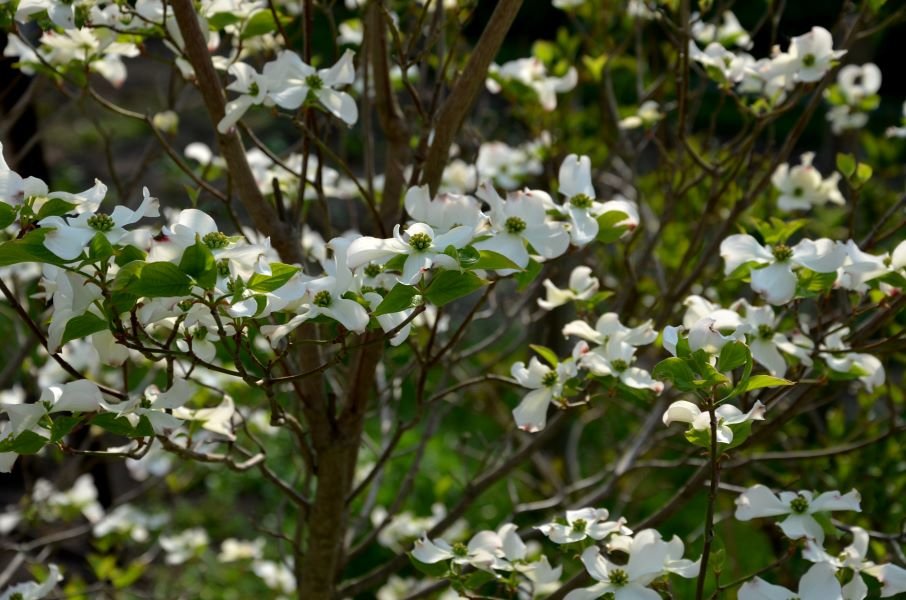
While some dogwood species grow quite large, certain cultivars of Cornus kousa, also called Chinese dogwood or Japanese dogwood, work beautifully in small gardens. Flowering dogwoods produce an abundance of showy blossoms in spring, scarlet leaves in fall, and bright red berries by winter.
Look for compact flowering dogwood varieties like ‘Milky Way’ and ‘China Girl’, which grow just 1.5-2 meters tall at maturity with a similar spread. Their graceful horizontally-tiered branching casts beautifully dappled shade in the garden.
4. Amelanchier
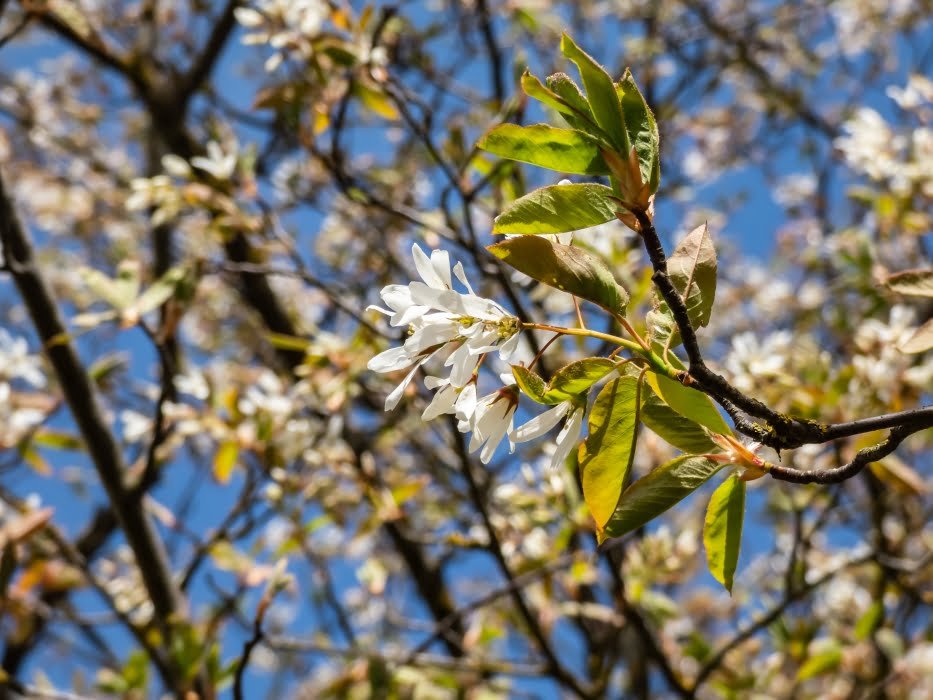
Also known as Juneberry or shadbush, Amelanchier offers clusters of delicate white flowers in spring and edible summer berries resemble blueberries in taste and looks. These multi-season trees thrive in partial shade and tolerate nearly any well-drained soil.
‘Prince Charles’ and ‘Ballerina’ are two dwarf Amelanchier cultivars that mature around 180-240 cm high and wide — perfect for tiny gardens. Place them where you can admire the floral display and harvest the sweet berries.
Amelanchier: A Perfect Tree for Your Small UK Garden
5. Prunus Flowering Cherry
Nothing announces spring’s arrival quite like radiant cherry blossoms, and Prunus x subhirtella cultivars bloom as early as March or April. Their vibrant pink and white flowers contrast beautifully against bare garden branches.
Consider compact flowering cherry tree cultivars like ‘Autumnalis Rosea’ and ‘Pandora’, which grow just 180-240 cm tall at maturity. Plant where you can see them from indoor spaces to fully enjoy their vivid spring blossoms.
6. Sorbus Rowan
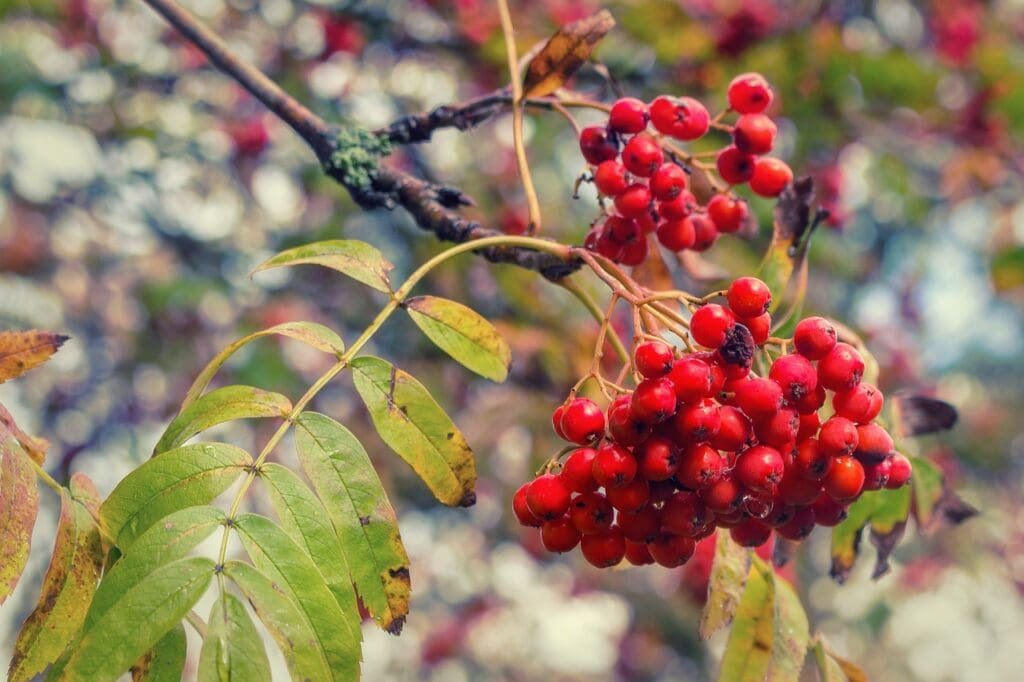
Rowan or mountain ash trees (Sorbus aucuparia) dazzle with pretty white flowers in spring and brilliant orange-red berry clusters by fall. They’re extremely hardy, adapting well to various light and soil conditions.
Plant dwarf cultivars like ‘Joseph Rock’ in your petite garden for multi-season visual excitement. It grows just 2-3 meters high and wide when mature. Position it where its lush green leaves will provide rich contrast to surrounding plants.
7. Betula Jacquemontii ‘Snow Queen’
If you love the look of white birch but lack space for a full-size specimen, ‘Snow Queen’ dwarf Himalayan birch offers outstanding adaptability. This Betula cultivar thrives in sun or partial shade and nearly any well-drained soil.
A mature ‘Snow Queen’ reaches just 4-6 meters high with a slender, pyramidal form. Its eye-catching chalk-white bark makes it a spectacular focal point amid vibrant garden greens. Place it in a prominent spot where you can admire its graceful shape and vivid colour contrast.
Planting and Caring for Small Garden Trees
Once you’ve selected the perfect compact tree varieties for your petite garden, it’s time to get them in the ground. Proper planting and ongoing care ensures your small trees thrive for years of beauty.
Digging the Right Planting Hole
- Choose a site with decent drainage and ample room for the tree’s root system as it expands.
- Dig a saucer-shaped hole 2-3 times wider than the root ball but just as deep.
- Roughen and loosen the hole’s sides so roots can easily penetrate the surrounding soil.
Setting Trees Up for Success
- Carefully place the tree in the hole, positioning it so the first major root branch sits at soil level.
- Backfill the hole with the native soil dug out initially, firming the soil around the root ball with gentle pressure.
- Water thoroughly until the soil is fully saturated. Make sure to continue watering consistently after planting.
- Stake next to the trunk for support if needed, particularly in windy gardens.
Ongoing Care for Small Trees
Consistent care keeps compact garden trees healthy and thriving:
- Watering: Check soil moisture weekly, watering whenever the top few inches become dry. Target the root zone rather than foliage.
- Mulching: Apply 2-4 inches of organic mulch around the tree out to the drip line. Replenish as needed. Mulch conserves moisture and cools soil.
- Pruning: Remove any dead or damaged twigs or branches. Prune for shape after the spring growth flush. Retain the tree’s natural form as much as possible.
- Pest/Disease Monitoring: Check weekly for common issues like leaf spots, powdery mildew infections, borers, and other insects. Address problems promptly to avoid spreading.
Choosing the perfect small tree varieties can elevate your petite garden’s beauty and functionality for years to come. Consider Japanese maples, flowering cherries, crabapples or other compact species that’ll flourish within your garden’s particular growing conditions and design style.
With some thoughtful upfront planning and proper ongoing care, dwarf trees guarantee season after season of rich ornamental colour, dappled shade, wildlife, edible fruits, and an enhanced sense of natural tranquillity in your outside oasis.

